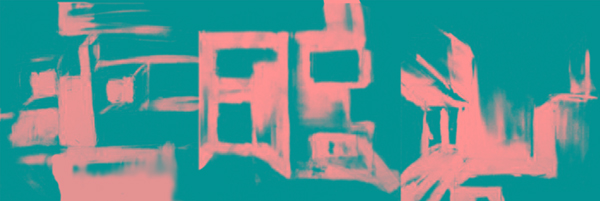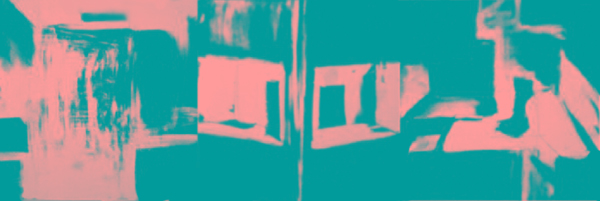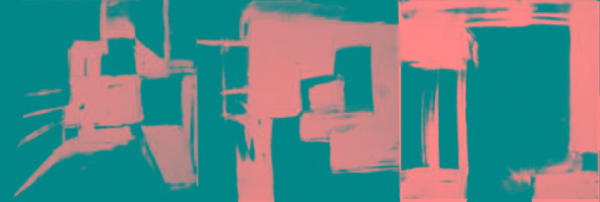 Trying to write down daily thoughts and reflections on the field of architecture and its wide field of interest, it needs to resort to simple findings which arouse some basic questions. Through an attempt to understand the present, inevitably we are guided to search the past, and then it is born the need to outline the future.
Trying to write down daily thoughts and reflections on the field of architecture and its wide field of interest, it needs to resort to simple findings which arouse some basic questions. Through an attempt to understand the present, inevitably we are guided to search the past, and then it is born the need to outline the future. 
The decade we leave behind us inherits a considerable wealth over the experimentation and the development of the synthetic process in architecture. Starting perhaps with the masterpiece of the American architect Frank O. Gehry, the Guggenheim Museum in Bilbao (1998), in the last ten years, architecture followed a multidimensional and rapidly changing course. Emphasizing on the creative imagination, the liberated thinking and the general denial of the existing styles and movements from architects, contemporary architecture developed concepts and ideals that have changed our perception of the built environment. In this way redefined the approach towards the development of the city and expanded the vocabulary of the design workshop.
Certainly, the Guggenheim Museum is not only an innovative building but also the first gesture of the intensified effort to transform Bilbao, from an industrial city in bankruptcy, into a new economy based on services. In a recent presentation of Mr. Ibon Areso (representative of Bilbao's city hall), in the International Architecture Festival 2010 in Barcelona, it became clear that the city has already changed its image by investing in an architecture that promotes art, services and tourism. The presentation testified that the city was saved from the economic and social decline through the implemented projects of some internationally renowned architects, such as F. O. Gehry, S. Calatrava, A. Siza, N. Foster, Z. Hadid. Their work resulted in the sustainable development of the city which today is a model of urban transformation with worldwide recognition.
Generally, the professional zeal and attention to detail, allowed to many distinguished architects all over the world to achieve innovations in their work and contribute continuously to the implementation and development of new construction techniques and building materials. Utilizing the rapidly advancing design features of the CAD programs (Computer Aided Design) and other technological tools, implemented in practice and accurately a series of complex forms and facilities, including complex surfaces, prismatic volumes, organic and parametric patterns, etc. The engineering challenge has been intensified and gradually renewed the research of the materials and manufacturing methods. In this way it is now feasible the construction of various projects that in previous times seemed utopian.
A look at the collection of contemporary architecture projects of the last ten years, ,,Architecture Now'', publicized by Tashcen, can impress everyone through the different materialized synthetic ideas and the wealth of the design vocabulary applied, including projects of varying scale and use. The dominant presence of photos and photo-realistic three-dimensional renders against plans (sections, functional diagrams, etc.), highlights the expressive power of image, however, it's not probably capable to satisfy the understanding of the works by the reader.
Nevertheless, on a second view, this kind of designing explosion is increasingly tending to push the international architecture practice to the limits of the loquacious ingenuity, the construction towards lots of unnecessary costs and the understanding of the built environment being shaped mainly by the glossy pages of architectural magazines. World's most pioneering architects led contemporary architecture in search of more and more ''shining,, yet expensive designing solutions, promoting in several cases the final architectural result as an ideal state of perfection, in which people have a minor role. Architecture has gradually begun to compete with fashion's allurement and ephemeral characteristics. All these facts are resulting from architects everyday struggle to figure out something innovative or even unheard, quite a few times something impressive but lacking real sense.
Those architects who found out an alternative designing style that would distinguish their practice, enjoyed fame due to their personal approach to contemporary architecture, creating thereby the controversial celebrity elite of the so called ''star architects,,. One could contemplate whether it is necessary and useful or not to architecture such a development?
Certainly, the Guggenheim Museum is not only an innovative building but also the first gesture of the intensified effort to transform Bilbao, from an industrial city in bankruptcy, into a new economy based on services. In a recent presentation of Mr. Ibon Areso (representative of Bilbao's city hall), in the International Architecture Festival 2010 in Barcelona, it became clear that the city has already changed its image by investing in an architecture that promotes art, services and tourism. The presentation testified that the city was saved from the economic and social decline through the implemented projects of some internationally renowned architects, such as F. O. Gehry, S. Calatrava, A. Siza, N. Foster, Z. Hadid. Their work resulted in the sustainable development of the city which today is a model of urban transformation with worldwide recognition.
Generally, the professional zeal and attention to detail, allowed to many distinguished architects all over the world to achieve innovations in their work and contribute continuously to the implementation and development of new construction techniques and building materials. Utilizing the rapidly advancing design features of the CAD programs (Computer Aided Design) and other technological tools, implemented in practice and accurately a series of complex forms and facilities, including complex surfaces, prismatic volumes, organic and parametric patterns, etc. The engineering challenge has been intensified and gradually renewed the research of the materials and manufacturing methods. In this way it is now feasible the construction of various projects that in previous times seemed utopian.
A look at the collection of contemporary architecture projects of the last ten years, ,,Architecture Now'', publicized by Tashcen, can impress everyone through the different materialized synthetic ideas and the wealth of the design vocabulary applied, including projects of varying scale and use. The dominant presence of photos and photo-realistic three-dimensional renders against plans (sections, functional diagrams, etc.), highlights the expressive power of image, however, it's not probably capable to satisfy the understanding of the works by the reader.
Nevertheless, on a second view, this kind of designing explosion is increasingly tending to push the international architecture practice to the limits of the loquacious ingenuity, the construction towards lots of unnecessary costs and the understanding of the built environment being shaped mainly by the glossy pages of architectural magazines. World's most pioneering architects led contemporary architecture in search of more and more ''shining,, yet expensive designing solutions, promoting in several cases the final architectural result as an ideal state of perfection, in which people have a minor role. Architecture has gradually begun to compete with fashion's allurement and ephemeral characteristics. All these facts are resulting from architects everyday struggle to figure out something innovative or even unheard, quite a few times something impressive but lacking real sense.
Those architects who found out an alternative designing style that would distinguish their practice, enjoyed fame due to their personal approach to contemporary architecture, creating thereby the controversial celebrity elite of the so called ''star architects,,. One could contemplate whether it is necessary and useful or not to architecture such a development?

In this sense, it seems naive to believe that a group of five eccentric architects brought in Bilbao some kind of salvation that could not be offered, for example, by its own indigenous capacity in architectural offices. It is possibly futile hoping that by emerging just five established architects will be solved the spatial problems of a city, without silencing in the same time hundreds of other professionals who have a voice and deserve to express it. Respectively, S. Calatrava's project in Athens, adorned successfully the opening ceremony of the Olympic Games 2004, but it never gave an answer to the various territorial problems that plague the city and neither participated on the local architectural dialogue.
The massive wave of the shallow designing impressiveness could not but affect architecture schools also. It is worth it the finding that we are in an era when the student of architecture neglects to deepen into the essence of his art. Merely feels designer, and fails to become an engineer. Because the student is the most restless and disinterested reactionary of the social puzzle, carries on his shoulders the hopes for the future and therefore bears responsibility. Because the engineer thinks and works first with his hands, sees through the senses, speculates and may decide while not being easily impressed, enriches his experience through experimentation. The final result of an architectural proposal released depends of course on architect's creativity, <<(...) by the provision of forms, an architect is implementing a system that is a pure result of his spirituality.>> to write in 1923 Le Corbusier.
Really, how much disappointing would it be the view of architecture students from the image they presented in a lecture by Mario Botta in a university auditorium in Italy, where they did nothing but clap and swarm for an autograph? None question, no wonder, no criticism attitude, no query expressed. Subdued and silent attendance, just like watching TV sunk into your sofa.
Nevertheless, in stark contrast on television, passive attendance, one-way communication and monologue, internet proves out a new useful tool in the technology workshop. The interaction between users, easy access and global reach, make it seems like an advocate of dialogue. It has been transformed very quickly into a channel of communication offering to smaller architectural offices the opportunity to promote their work in a free and creative way. Moreover internet transmitted into international architectural competitions a worldwide scope of the exchange of ideas. A book lacks in size and portability of information against a pdf file, the conventional handwritten letter now travels across the world in split seconds via e-mail. Architecture is already passing into digital reality and going around the world, spreading messages and broadening the dialogue with unprecedented momentum.

It is to be seen how will it be translated the downpour of photovoltaic panels, green roofs and general green chatter into a simple architectural vernacular, how the upcoming visions will give qualitative new answers to key problems created by changing times.
Nowadays in Greece, we are at a crossroad, where unemployment is growing rapidly and construction activity languishes dramatically. Architects, we are losing over the years substantial contact with the profession. This contact that brings us close to all these elements that set us servicing people. Architecture seems to be a luxury privilege, and the way we talk about it doesn't sound comprehendible to most people's ears. The local conflict about respecting the professional rights of architects has not even started since many years ago. Assignments of major projects through open architectural competitions are still the exception rather than the rule. The poor imitation of projects of ,,developing'' West, is possibly leading to an ,,undeveloped'' East. The only professionally expert in the organization of space and design of the built environment, currently seems unable to give simple design solutions to problems that are increased by the economic downturn.
The Greek city suffocates, densely built and hastily (mis) designed, hosts more cars than residents. It is sad, consequently, the fact that nobody really ever cared about it. Everybody violated it over time to satisfy the need of apartment buildings. Clearly it's time that architects should work on demolishing instead of building. Even before we begin to design the next building, we need to learn how to design the gap, open public spaces, once our cities miss them so much.
The new life model of the next decade does not fit within it the standards of (over) consumption and useless luxury. It turns to more humane and affordable options for entertainment and daily activities, while focuses on the part of technology that offers real solutions to everyday problems, always bearing in mind the factor natural environment. The lesson of the economic recession is clear evidence of the multiple false choices made by our society in recent years. In this sense, the economic recession in the late 00 'could be concrete basis for a new beginning in the early 10'. A new beginning inevitably requires new visions, new approaches, new answers to questions raised at the base of problems that have been clearly defined.
But how difficult it is to suggest useful solutions to nowadays social and economic problems? We need real visions. The last century has proved practically their qualitative superiority, in a Balkan political situation which seems unlikely to change with conventional means.
And making a start, for example, let's turn our back on boring Sunday walks at the mall, a space that does not belong to us and let's go back into our most precious commodity, the public areas of squares, parks and walkways. One will rediscover then his lost friends from childhood pureness and a peace that will help him redefine the future again, this time under different conditions and priorities. Then we all may really feel that the squares are inhospitable, that our cities do not breathe, and will begin this debate on real and collective emotions.
Architecture and the city need new models of spatial restructuring and architects have to redefine their role in relation to the profession and its environment. We need to adopt an approach concrete and tangible. It's probably time to start thinking more clearly than in the past and act simply and effectively, within the primary basis of human living qualities, ,,in the century of information'', in the decade of economic confusion, in Internet's reality.
Nonetheless, before we rush to find out answers shouldn't we try to create questions? Shouldn't we try to forget what we've learned so far and reword from the beginning our needs and concerns. The contemporary era has not yet found the contemporary man who would dignify it. The dawn of the new decade brings up the need for a radical renewal of our spiritual existence in everyday life. And architecture is required to accommodate these new realities, but this time, in a pretty different way from the one it used to do.
Irgen Salianji, Chris BletsasStudents of architecture in the University of Thessaly, Greece
http://www.greekarchitects.gr/en/architectural-review/architecture-and-the-city-in-the-dawn-of-the-new-decade-id3799

Δεν υπάρχουν σχόλια:
Δημοσίευση σχολίου